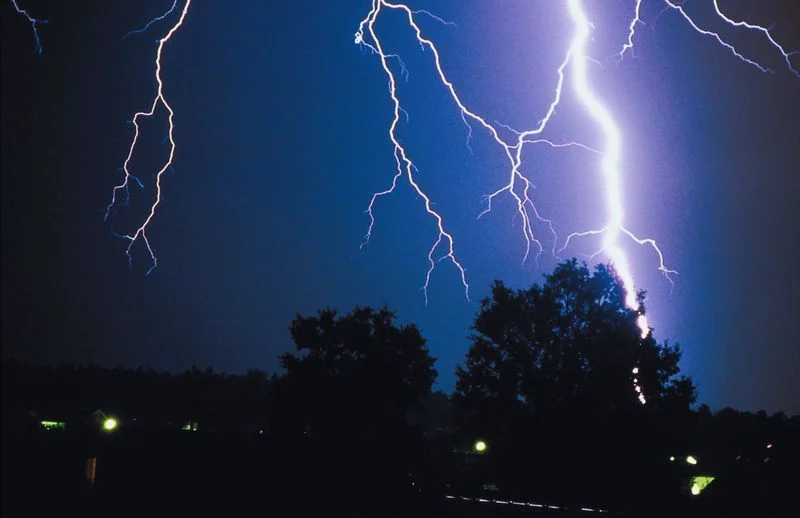A random selection of Weather Fun Facts
A 'Positive Giant' is a bolt of lightning that strikes the ground up to 20 kms away from the storm, carrying more power than regular lightning. It seems to come out of clear sky, so the saying has arisen, 'a bolt from the blue'.
©Getty
2. No two snowflakes are the same.
A scientist photographed over 400,000 snowflakes to prove it!
Most snowflakes are six-sided. Sometimes the six sides are flat, and sometimes six decorative spokes radiate out from the centre.
3. A one square kilometre spot in the mountains of the Democratic Republic of Congo, near a village called Kifuka, gets more lightning strikes than any other place on Earth, an average of 158 a year.
4. The USA has more violent weather extremes than any other country. Each year it averages about 10,000 big thunderstorms, 1000 tornadoes and hurricanes, more than any other country.
Antarctic landscape ©Getty
5. If all the Antarctic ice cap melted, about a quarter of the world's land would be flooded as the oceans rose.
6. The system used to mark the temperature in degrees Celsius (ºC) was named after a Swedish scientist, Anders Celsius. He invented it in 1742.
7. It is so cold in winter in some parts of Russia that milk is sold in frozen blocks instead of in liquid form.
8. The first time that weather reports were published in a newspaper was in 1692 in England.
The Atacama Desert ©Getty
9. Antarctica is the driest desert on Earth. It is also the windiest place on Earth.
10. The driest non-polar place on Earth is the Atacama desert in South America. It gets less than 0.1 mm of rain each year. No rain at all fell for over 14 years (1903 - 1918)
11. Over a period of 38 years, Mawsynram in India, received an annual rainfall of 12 metres a year.
12. In one year, August 1860 to July 1861, Cherrapunji in India received 26 metres of rain.
13. The temperature of lightning can reach 30,000ºC. When a tree is struck by lightning, the water inside the tree boils and the tree explodes.
The Empire State Building in New York ©Getty
14. The Empire State Building in New York, USA is struck by lightning at least 23 times a year. It does have a lightning conductor at the top of the spire.
Read about the Empire State Building:
https://www.huffingtonpost.com/nycom/empire-state-building_b_3923030.html
15. In one 24 hour period in 1974, 148 tornadoes hit midwestern USA, killing over 300 people and injuring 5000.
16. When clouds are so low that it is impossible to see where the clouds end and the land begins, it is called a whiteout.
17. The lowest temperature ever recorded by ground measurements was minus 89.2ºC. It was recorded on 21 July 1983 in Antarctica at the Vostok Station.
Zabriskie Point in Death Valley, USA. ©Getty
18. The hottest temperature ever recorded was 56.7ºC on 10 July 1913 in Death Valley, California. Before then the hottest temperature was 58ºC recorded at El Azizia, Libya but the World Meteorological Organisation disqualified that in 2012 because it was recorded where asphalt roads would have raised the ground temperature by up to 7º.
19. The largest snowflake ever recorded measured 38 cm across. It fell in the United States in 1887.
20. The droplets of water vapour that make clouds are 1000 times smaller than a raindrop.
A tornado in US farmland ©Getty
21. A tornado in the United States picked up a 9 month old baby called Joshua Walls and carried him for 270 metres before putting him down unharmed.
22. 60% of the earth's fresh water is frozen in the polar ice caps.
23. The capital of Finland, Helsinki, has 51 days in winter when it is dark for 24 hours a day, and 73 days of daylight in summer when the sun does not set.
24. At 407 kilometres an hour, the strongest gust of wind recorded was at Barrow Island, Australia in1996.








